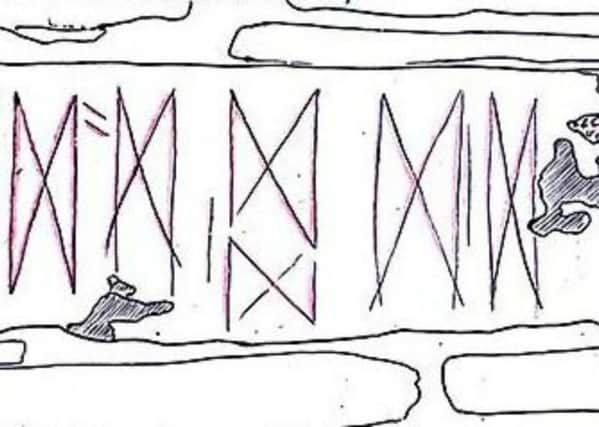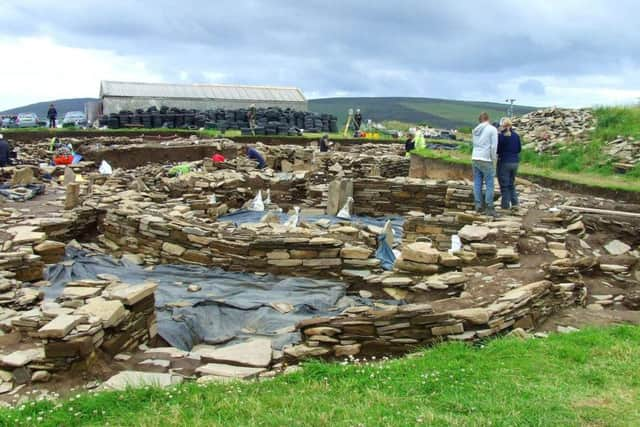Neolithic 'butterfly' markings found on Orkney


Archaeologists working at Ness of Brodgar spotted the markings after the sun hit a section of stone being examined “at the right moment”.
The markings, which went unnoticed for many years, have been described as being among the “finest and the most beautiful” found on Orkney to date.


Advertisement
Hide AdAdvertisement
Hide AdThey were found during the latest stage of the dig at the sophisticated complex of buildings that was built and occupied more than 5,000 years ago.
Ness of Brodgar sits at the heart of the Neolithic Orkney World Heritage site between Ring of Brodgar stone circle and the Stones of Stenness.
The discovery was noted in the blog being kept by archaeologists working on the project.


It said: “As the light angled down, they spotted what no one else who has worked there in previous years had noticed.
Advertisement
Hide AdAdvertisement
Hide Ad“A large stone block in the wall was covered with ephemeral “butterfly” motifs.
“They are regular and beautiful, but without their sharp eyes, and the early morning July sun, they might have gone completely unrecognised.”
It added: “The stone has been removed to a safe place, but the experience is a warning note to any diggers who may not examine the stone in front of them closely enough.”
The carvings may have been deliberately made to catch light at certain times of the day, it is believed.
Advertisement
Hide AdAdvertisement
Hide AdArchaeologists may now re-examine other stones to see if other markings, which could have once been filled with colour, may have been missed.
Dr Antonia Thomas, of the University of the Highlands and Islands and an expert on Neolithic art, told BBC Orkney that the designs were among the “finest and most beautiful” found in Orkney so far.
Nick Card, Ness of Brogdar site director, told reporters that find had been “very fortuitous” as it depended on the light hitting them at the “right moment and at the right angle”
The dig is being led by the University of the Highlands and Islands Archaeology Institute and supported by Ness of Brodgar Trust.
